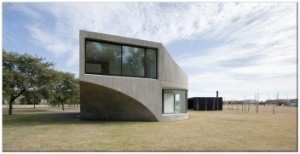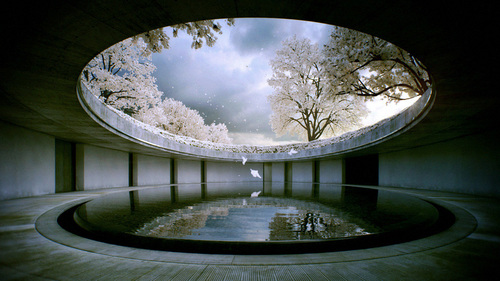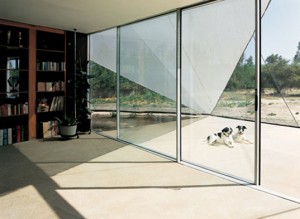Relational Logics -T2
Relational Logics – T6
In ordinary architecture, our world is arranged to the word “function”, divided into black and white. Life is sustained by the acts that lie between them, as Sou Fujimoto explains in his text Primitive Future. The opposite realities of the prime states of architecture are the nest and the cave. The nest is a “functional place” built as a hospitable arrangement to satisfy the prior needs of the people or animals and the cave is the result of a natural accident whether it is hospitable or inhospitable to the people, although the nest and the cave look similar, they are opposite concepts.
For instance, between inside and outside, between nature and artifice, space cannot instantaneously switch from one to another but the space lies in the gradation that exists between them creating a whole new diversity of concepts giving architecture a new world of possibilities. Different gradations create different types of experience in the transition from A to B, nest to cave, nature to architecture.
Like a “hazy area”, the ideal architecture is a place where inside and outside merge. As a sense thought of as the ultimate architecture, it can be called only in-between where all places are connected and are simultaneously detached creating an infinite range of conditions that lie between detachment and connection.
For example, the Wall House by Frohn and Rojas, is a house where the wall, as a complex membrane, structure our social interactions breaking down the traditional walls of a house into different layers where you can see the two opposite concepts of artifice and nature, you can see the gradation from private to public, starting with the concrete cave, stacked shelving, milky shell to the soft skin, creating different atmospheric environments connecting nature but also isolate from nature. It’s a hybrid on internal-private and external-public environment creating a blurred connection of layers as you go inside “the cave”, it is more detached from nature.
As a detached-fit, architecture is simultaneously a connected-fit. The relational logics are systems of interaction, connection and alterations in the experience that happens in the experience of “in-between” architecture creating an infinite range of conditions that lie in between them. Therefore the concept of architecture is a new existence possessing the diversity of nature and the lucidity of artifice.
Sustainable architecture, more than a tendency, is a great need nowadays and in the future. For me, this is a very important topic that I want to study. Understanding the negative environmental impact of the buildings will help me to research new systems and efficient ways of the use of materials, energy and the right development of space.
Relational Logics_T6
Relational Logics in Advanced Architecture

Relational Logics. T3.
Case Study – The View House. Diego Arraigada & Johnston Marklee
Critical Reading – Mark Wigley, “The Architecture of Atmosphere”, in Daidalos 68, July 1998, pp. 18-27
Relational logic in advanced architecture can be expressed as a natural relationship, cultural/social/territorial relationship and Informational/Digital relationship. These can be further defined as positional, metaphorical, atmospherical, intangible, disturbed and environmental relations.
The View house by Diego Arraigada &Johnston Marklee is an example where such relations can be identified as a positional response.
The form also expresses a metaphorical response to the imagery aspect of the context.The form here captures the frame the context in a very metaphorical manner, in a way trying to be in balance with the context. But is it in some way reaching to capture the atmosphere?
“The concept of atmosphere troubles architectural discourse- haunting those that try to escape it and eluding those that chase it.” – Mark Wigley. The Architecture of Atmosphere.
Architecture has always been a response to the context/variables. It can hold, reflect and sometimes even mould the context. It can capture energy but it cannot capture the atmosphere. Atmospheres being complexly individualized, a collective responsive to it, in terms of architecture is a fragile illusion.
Advanced Architecture is highly reflecting the need of information. Such information can only be acted upon with relations. These relations are the grammar of advance architecture. Using information without such grammar is just irrelevant alphabets. It helps create a complex network on which form can evolve, such complexity helps formulate reasons. And thus relational logics have a very primary role in building advanced architecture.
Research topic – Smart assembly systems as a response to the limitation of machine sizes in fabrication.
Understanding the difference between material and machines.
How can assembly, material and machines be unified into a singular system?
Can such system be a real time data driven response to every parameter?
And thus can it be an optimized response to all the relational logics?



